8 Reasons Why Your Peace Lily Leaves Are Turning Brown
Peace Lilies are the common houseplants seen in most houses for their beautiful white spathes and dark green leaves. However, it is disturbing to notice that the leaves have started turning brown on the tips. If you don’t treat this on time, the browning will spread, and the leaves will lose their beauty.
The brown tips on the peace lily plants primarily happen due to a wrong watering pattern. Either you are overwatering or not watering them at all. Exposing them to direct sunlight can also cause brown tips in the plant. Other reasons might be over-fertilization, temperature, and humidity issues.
Over-fertilization and bad water cause salt build-up in the soil, leading to your plant’s brown tips.
Sometimes, browning starts at the tips because possibly the leaves are getting old. Natural brown tips do not cause any harm to your plant. These aged leaves will eventually fall off someday.
No need to panic.
In this article, you will know all possible reasons for brown tips on your Peace Lilies and their solutions.
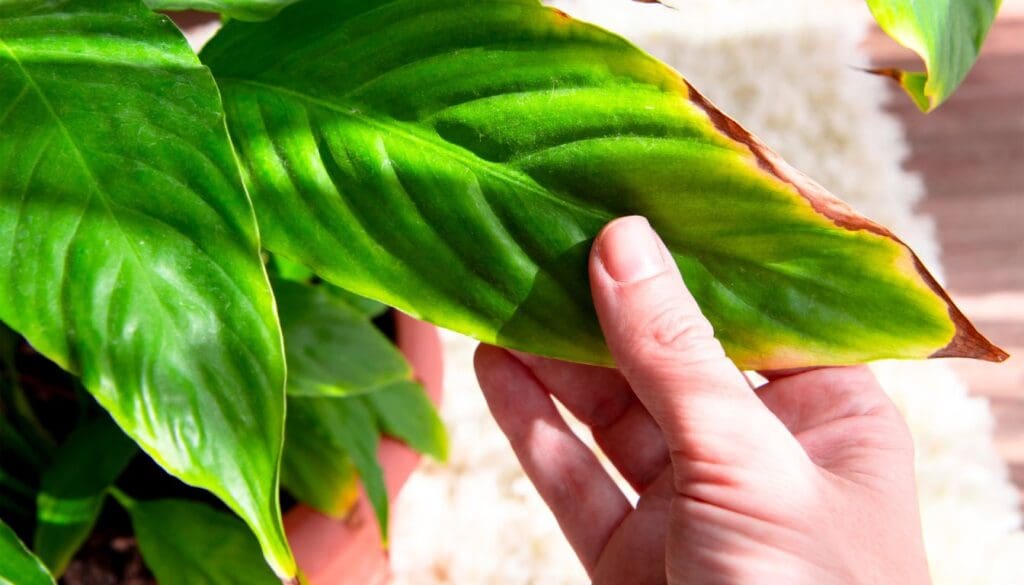
Please note: Simplify Plants is reader-supported. Some links in the post are affiliate links and I get a commission from purchases made through links in the post.
Why are the tips of my peace lily leaves going brown?
Brown tips on the peace lily leaves are signs that something is not right in the plant. They are unhealthy, need some extra care, and thus start showing signs.
Some of the common causes are brown tips in the plant are:
- Inadequate watering
- Poor water quality
- Improper fertilization
- Direct sunlight
- Poor drainage
- Temperature issues
- Low humidity
- Spent leaves and flowers
Let us get into these issues in detail to learn how they cause brown tips on the leaves and their remedies.
Inadequate watering

One of the common reasons for brown tips in the peace lily is poor watering techniques. When your plant starts becoming brown at the tip of the leaves, it means either you have overwatered your plant or starved them for water.
Peace Lilies love being in moist soil. That doesn’t mean you should water them so much that the soil ends up remaining soggy and wet.
Sometimes, you overwater your plant because the potting soil doesn’t have a sound drainage system.
You tend to water your plant because you think that frequent watering will keep them growing. Well, that is not the case. They need moist soil, not wet soil. Their need for water depends upon the condition of the soil and seasons. They do not need frequent watering during the winter months.
Overwatering will not only cause brown tips on the leaves, but the plant will also start drooping. They will have a water-soaked look. Before the brown tips, the leaves start turning yellow. Overwatering can also cause root rot if the situation gets worse and you are not paying any attention.
Similarly, underwatering too can cause brown tips in the leaves. They need water to absorb the nutrients and remain hydrated constantly. Belonging to the rainforest areas of America, they do not like being in drought.
If you do not water your plant properly, the leaves will become dry, hard, and crispy and will start browning at the tips of the leaves. They also feel brittle when touched.
Solutions:
To save your peace lily from overwatering:
- Check the drainage system of the soil and pot.
- Understand their seasonal needs. During the winter months, peace lilies need less moisture. So do not water much.
- Water them once a week, evenly from all sides of the pot. This will work well, and your plant might not need watering for the rest of the days of the week.
- Choose an ideal pot size, depending on the size of the plant. A big or too small pot will make the soil too loose or compact, and the roots will not breathe in excess water.
- Prepare the soil medium such that it can drain excess water from the soil. Avoid using soil having clay as clay can hold too much water for a long time.
- If your peace lily has root rot due to overwatering, repot the plant with a new pot and fresh soil.
To save your plant from under-watering:
- Watering depends on the plant size. Big plants need more water than smaller plants.
- Observe the reactions of the plant. If they start wilting, you must water them well.
- Understand the seasonal needs. They need more watering during the summers and springs because those are the dry months.
- The soil should hold enough moisture. Avoid using sandy soil as it drains water very quickly.
How to check moisture?
By knowing how to check moisture, you will understand whether the plant is experiencing overwatering or under-watering.
To check the moisture, you can poke your finger into the soil. If it feels too wet, the plant will not need watering. But if the top half part of the soil feels dry, water your plant.
Another way to check is by lifting the pot. If the pot feels heavy, your plant will not need watering. If you tap the bottom of the pot and you hear a hollow sound, then your plant probably needs some watering.
The best way to avoid the watering issue is to allow the top half part of the soil, about ½ inches, to dry up before you opt for the next watering.
Also read: How Often Should A Peace Lily Be Watered? (Peace Lily Water Requirements)
Poor water quality

Tap water holds minerals that are harmful to the Peace Lilies. They contain chlorine, fluorine, and bicarbonates, which affect the plant.
Using such water can be dangerous for the plant. If the plant cannot digest such water, it will show signs like brown tips on the leaves.
The problem starts when the roots start absorbing the chlorine ions. They start getting into the xylem vessels of the plant.
These ions travel through the small channels in the leaves. The tips start turning brown as the chlorine harms the chloroplasts.
It affects the ribosomal enzymes, due to which the plant fails to digest their food.
Solutions:
To save your plant from such conditions:
- Use distilled water. Avoid using tap water.
- Use rainwater for watering your peace lily.
- You can use tap water but before that, let it sit overnight. This will allow the minerals like chlorine and fluorine to evaporate into the air. After that, the water is safe for the Peace Lilies.
- Use room temperature or tepid water.
Also read: How To Save An Overwatered Peace Lily? (Signs, Problems & Solution)
Overfertilization
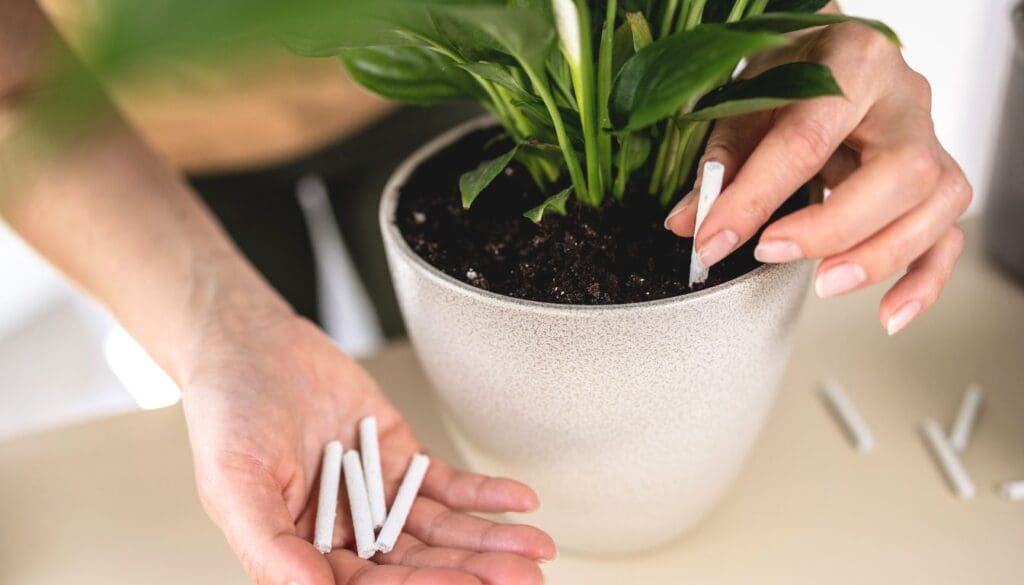
Fertilizing the peace lily helps in the better growth of both the plant and the flowers. A balanced fertilizer gives all the essential nutrients to your plant to keep it healthy and happening.
But, fertilizers sometimes contain high salt content, for example, sodium chloride.
When you fertilize your plant, the plant gets the chlorine ions in them, which are very harmful to Peace Lilies, and we explained how chlorine affects the plants in the previous point.
Over-fertilizing your peace lily will expose more chlorine ions in the plant, which will cause more damage to the plant. A high quantity of fertilizer will cause necrotic leaves in the Peace Lilies, in the tips and margins of the leaves.
Overfertilization prohibits the plant from absorbing water because the salts accumulated in the soil absorb all the water. The plant remains dehydrated and cannot get enough nutrients from the soil.
Solutions:
- Use less fertilizer if you do not know the right amount.
- You do not need to fertilize during the winter months.
- Water the plant well after fertilizing.
- Avoid fertilizing the leaves and flowers.
- If the soil has accumulated salts, flush off the soil. But do it when the soil is dry. Or your plant will suffer from overwatering.
- If you are using liquid fertilizers, the soil will absorb them completely. In such conditions, if the situation worsens, you might need to repot your plant.
- Avoid fertilizing for some time to allow the plant to heal.
- Remove the leaves which have turned completely brown.
Also read: What Kind Of Fertilizer Does A Peace Lily Need? (Peace Lily Fertilizer Ratio)
Poor drainage system
Your Peace lilies can have trouble from overwatering if the soil or the pot does not have a sound drainage system.
If your soil does not have a sound drainage system, it will not be able to drain the excess water, due to which the root system will remain soaked in water.
This will suffocate the roots, and the plant will not get enough moisture and nutrients. Due to an extended stay in the water, the roots will become mushy and start rotting.
Similarly, if the soil quickly drains all the water, that will keep the soil dry, and the plant will not get water and nutrients.
This happens when the sand content is excess in the medium. It drains water so fast that the plant does not get enough time to absorb the water and nutrients.
Along with the soil, the pot, too, should have a sound drainage system. The pot not being able to drain water will keep the soil wet for a prolonged period.
Solutions:
Remember these points while preparing the potting soil mix for peace lilies:
- Prepare a soil mix that can drain excess water and also hold enough moisture.
- Avoid using soil that is high in clay or sand. Clay can hold moisture for a long time and might cause overwatering. Sand can drain water very fast, due to which the plant will fail to absorb the nutrients.
- If your soil has high sand content, add compost to the soil to reduce the space between soil particles. The same goes for a soil having a high content of clay. Compost helps in breaking the compactness of textured soil particles.
Along with this, choose a pot that has drainage holes in them. Try using ceramic, terracotta, or plastic pots with a good amount of drainage holes.
Also read: What Kind Of Soil To Use For Peace Lily? (Peace Lily Soil Mix)
Scorching heat of the sun
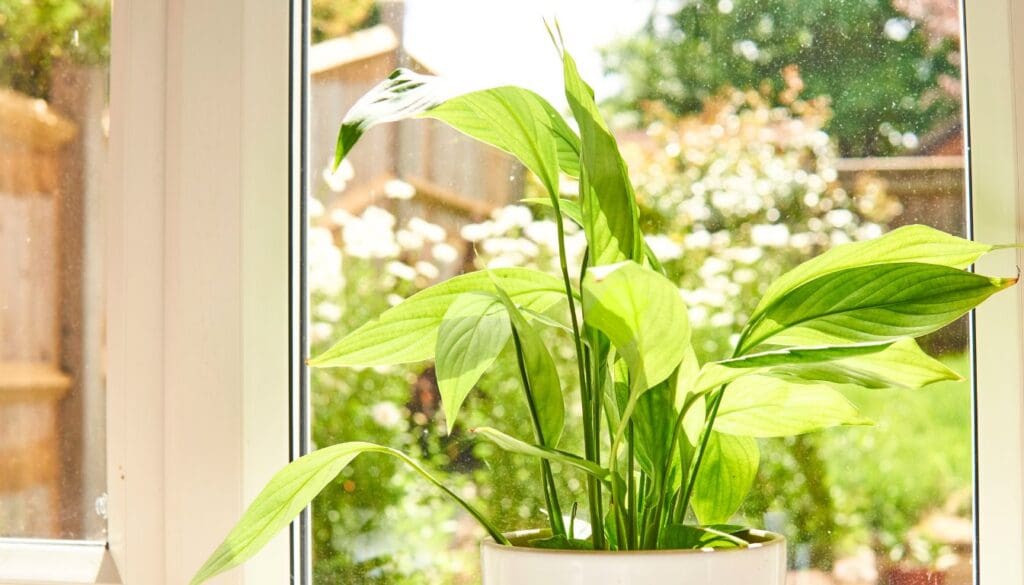
The peace lilies grow well in their native land under the forest canopy because they get indirect sunlight there. They need bright sunlight without getting exposed to direct sun. Direct sunlight causes brown tips and sunburn in them.
Solutions:
- Keep your peace lily near the window that doesn’t receive intense sun rays.
- Pull down the curtain to create a filter for the direct sunlight.
- Put your peace lily near windows facing north or east. This direction gives great bright yet less intense sunlight.
- If you keep your peace lily on a patio, move them to a shaded area.
- You can use artificial lights to grow peace lilies. They will also give the best results.
Also read: How To Fix A Sunburned Peace Lily? (Causes+Tips)
Temperature stress
Peace lilies need temperatures ranging between 68 to 85°F during the daytime, and at night the temperature can get 10°F. Exposure to temperatures above or below this range will cause damage, starting with brown tips on the leaves.
Avoid keeping your peace lily near the doors and windows, which are frequently closed and opened, allowing drafts to enter the room and touch the plant.
The peace lily cannot tolerate such frequent temperature stress and develop brown tips that eventually make the whole leaf brown.
Solutions:
- Keep your peace lily near the window but a few feet away to make sure it gets indirect sunlight.
- Keep it away from heaters, radiators, and air conditioners. You can keep it in an air-conditioned room, but keep the plant far as the cold air AC can damage it.
Also read: How To Care For Peace Lily In Winter? (Peace Lily Winter Care)
Low humidity

Peace lilies need humidity of at least 50% to 60% to thrive. The indoor air might be too dry for the Peace Lilies. You need to maintain at least 40-50% humidity to keep them healthy. If the plant fails to get this much humidity, the tips of the leaves can start turning brown.
Solutions:
- Mist your peace lily regularly.
- Keep a humidifier in the room.
- Place the pot over a pebble tray. Put some pebbles in a tray, add some water and place the plant on it. Make sure that the drainage holes don’t touch the water.
- Group many plants to let them have their humid environment.
Also read: Do Peace Lilies Need Misting? (+Ideal Humidity)
Spent leaves
When the leaves finish their lifecycle, they start aging and might start turning brown from the tips. It does not harm your plant. It is a natural process. The leaves eventually turn completely brown and fall off.
New leaves grow once the old ones drop off. There is nothing to worry about this, and there is no solution to this.
You can remove the brown leaves if you do not like the sight of them. To cut them off, make sure that the cut is angled below the brown tip to avoid the new tips turning brown.
Also, remove the dead blooms, if any. While cutting, use sterilized scissors or pruners to avoid bacterial and fungus infection.
How to prevent brown tips on peace lily leaves?
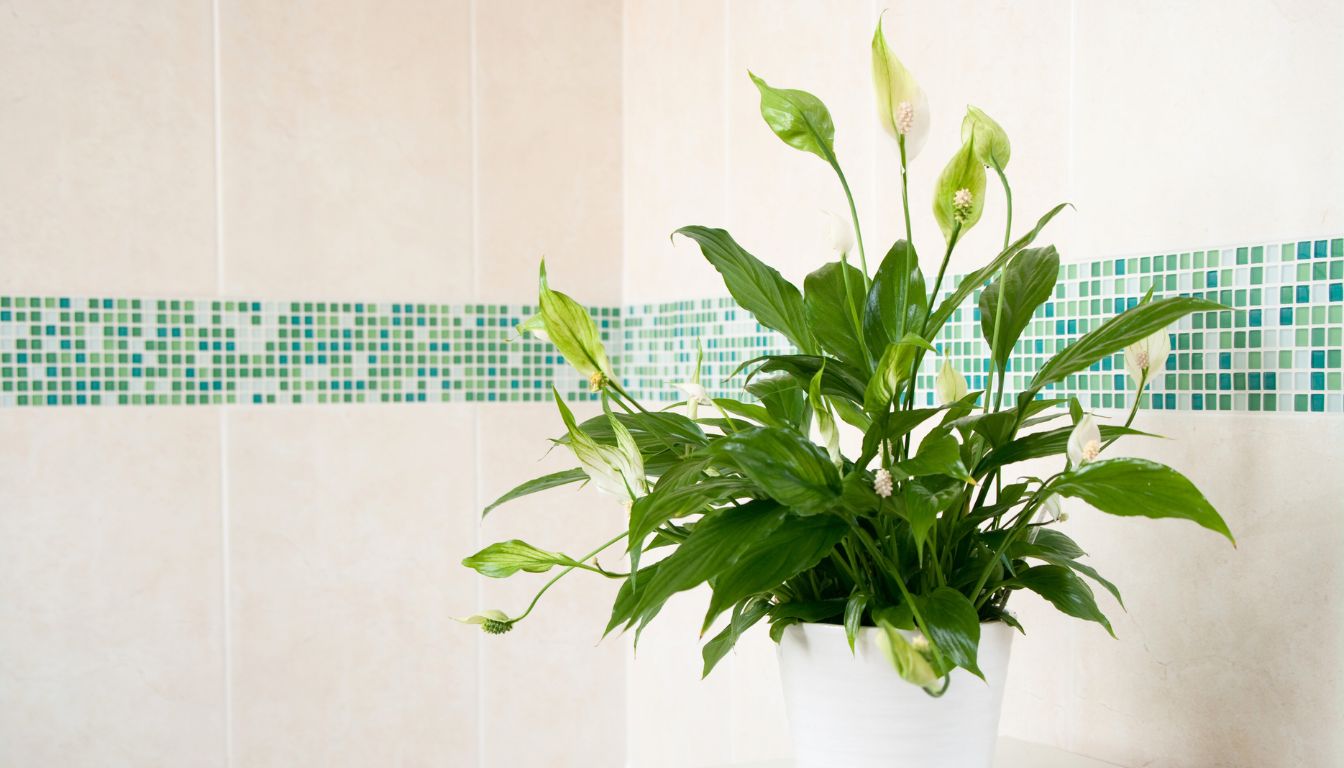
By taking proper care of your peace lily plant, you can prevent the brown tips.
Regulate the water
The best way to prevent brown tips due to watering issues is by watering the peace lilies consistently. Water your plant once a week equally from all sides.
To maintain a proper schedule, you can mark on a calendar which day you have watered your plant and when it should be the next day. But check the moisture content to understand whether your peace lily needs water.
Poke into the soil or lift the pot to understand the watering needs. Allow the soil to get dry between the waterings.
During winter, peace lilies will need less water, whereas, during the spring and summers, they need frequent water as it is hot and dry. So water accordingly.
Flush the soil regularly to remove salt build-up due to poor water and over-fertilization
Soil accumulates salts due to poor water quality as it contains chlorine and fluorine. Along with that, fertilizers containing high salt also cause the same thing. Flushing regularly will prevent the accumulation of salts.
Allow the soil to dry completely before flushing. Water well so that it does not drain from the drainage holes. Let it remain for about 10 to 20 minutes. After that, water the plant well and allow the water to drain out.
This will help flush out all the accumulated salts from the soil and roots and keep the plant, leaves, and roots healthy.
Fertilize your peace lily with a balanced fertilizer once a month. Avoid using it during winters.
Match temperature with sunlight
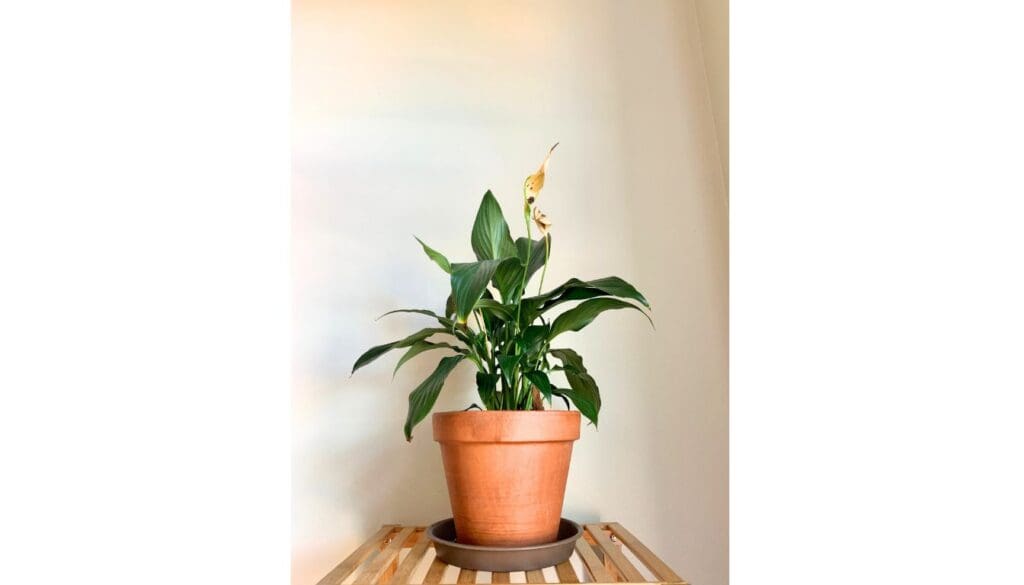
A warm room with ample indirect sunlight is ideal for peace lilies. Do not try increasing temperature with heat generators as it will cause low humidity. The ideal temperature is 68-85°F.
Place the plant in a room with large glass windows along with curtains. The large windows will give the plant enough bright light. The curtains will create filters for the direct sunlight. Pull the curtains down whenever the sunlight gets too intense.
This will also help in maintaining the perfect temperature. The glassed window will prevent cold drafts from the outside.
For light, you can place your peace lily near north or west-facing windows as they do not get the direct harsh sun rays. You can also grow these plants with artificial lights, giving them enough light and saving them from brown tips and sunburn.
Bring the plant indoors if you have placed it on balconies or near the doors during cold winters. Keep it away from the window during cold, windy nights.
Note: If you find any negative signs on your peace lily, do not hesitate to try out everything to revive it. Growing plants in your house are all about trial and error. Try to provide and protect them with every possible thing for taking the best care of the plants.
Ref: ScienceDirect, NCBI, University of Vermont, Nationalgeographic, NC state university, University of Florida, The University of Arkansas, Queensland Government.
Recommended Garden Supplies
| Product Image | Our Recommended Gardening Supplies | Check Offers! |
|---|---|---|
Top Top
Top
Top
Top
Top
Top
Top
Top | rePotme Houseplant and Tropical Classic Potting Soil Mix | Check Offer On Amazon |
 Top
Top
Top
Top
Top
Top
Top
Top | Espoma Organic Indoor Plant Food | Check Offer On Amazon |
 Top
Top
Top
Top
Top
Top
Top
Top | GooingTop LED Grow Light 6000K Full Spectrum Clip Plant Growing Lamp | Check Offer On Amazon |
 Top
Top
Top
Top
Top
Top
Top
Top | Soil Moisture Meter | Check Offer On Amazon |
 Top
Top
Top
Top
Top
Top
Top
Top | Govee Hygrometer Thermometer, Bluetooth Enabled! | Check Offer On Amazon |
 Top
Top | LEVOIT Humidifiers for Large Room(Best For Plants) | Check Offer On Amazon |
 Top
Top
Top
Top
Top
Top
Top
Top | Upgraded DIY Automatic Drip Irrigation Kit, 15 Potted Houseplants Support | Check Offer On Amazon |
 Top
Top
Top
Top
Top
Top
Top
Top | Stainless Steel Heavy Duty Gardening Tool Set | Check Offer On Amazon |
 Top
Top
Top
Top
Top
Top
Top
Top | Bonide Insecticidal Soap | Check Offer On Amazon |
 Top
Top
Top
Top
Top
Top
Top
Top | Bonide 32 oz Spray Neem Oil for Organic Gardening | Check Offer On Amazon |
 Top
Top
Top
Top
Top
Top
Top
Top | Garden Safe Fungicide | Check Offer On Amazon |

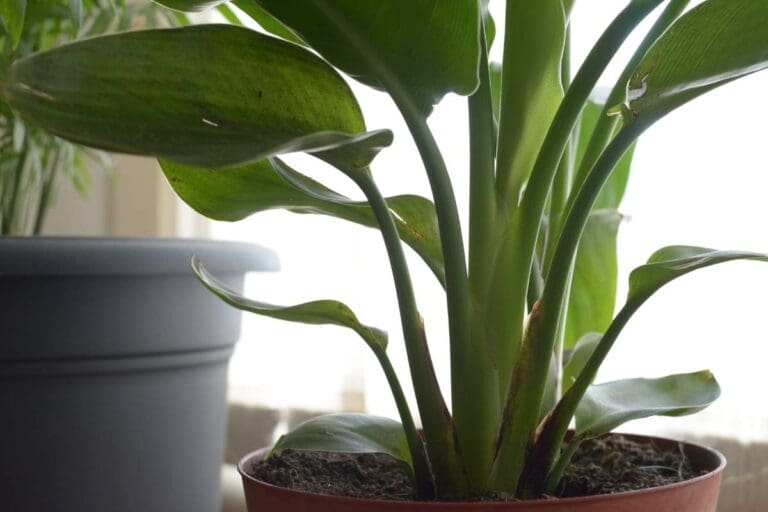

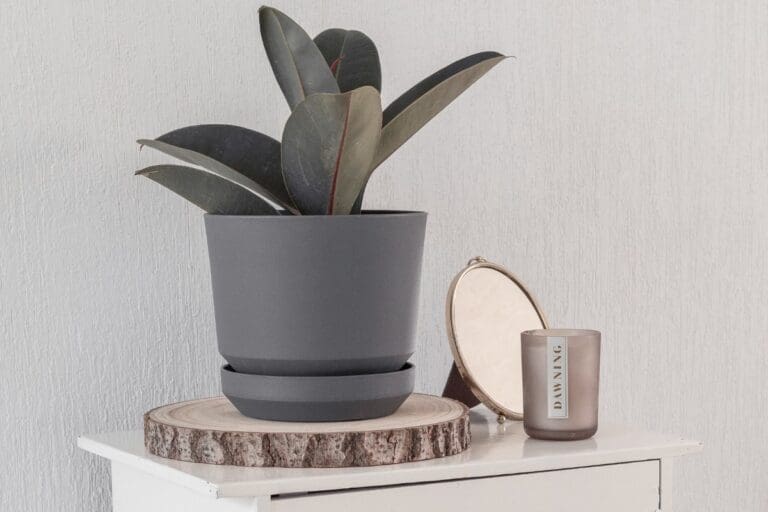


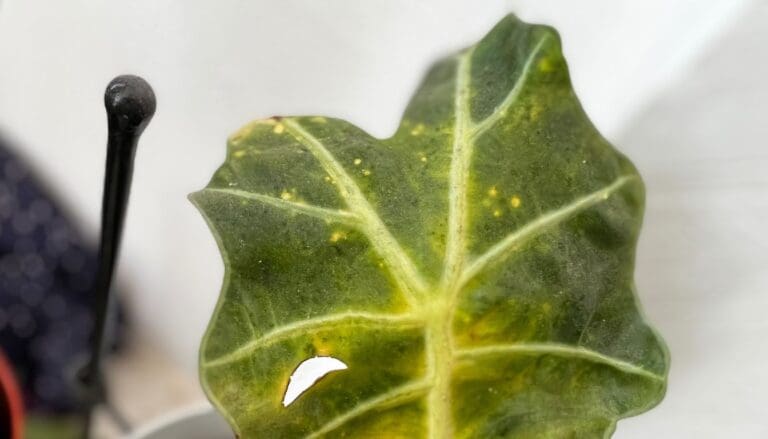
I have well water but I have a water softener on it that uses salt. Should I not use that tap water?
Hi Allen,
Using water from a salt-based softener isn’t ideal for plants as the sodium can build up in the soil and potentially harm them. It’s better to use rainwater, distilled water, or if possible, bypass the softener for watering your plants to keep them happy and healthy.
Happy watering! 🌱💧